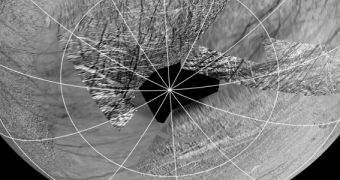Astronomers operating the NASA/ESA Hubble Space Telescope late last year announced a significant discovery made on the surface of Europa, one of Jupiter's icy moons. The team said that water vapors similar to those on Saturn's moon Enceladus had been detected emanating from this celestial body.
The jets were discovered above the frigid south polar region on Europa, in a setup eerily similar to that on Enceladus. The former thus joins a very select group of moons in our solar system that researchers believe may contain an ocean of liquid water trapped under kilometers-thick surface ice sheets.
The December 12, 2013 detection represents the first strong evidence of water jets on Europa, even though their existence has been proposed quite some time ago. Confirming their existence has been made difficult by the fact that no orbiter exists around Jupiter at this time.
Enceladus has been investigated on all sides by the NASA Cassini spacecraft, which has been analyzing Saturn, its moons, and its ring system since achieving orbital insertion, on July 1, 2004.
The image above was created by scientists at NASA and the SETI Institute, in California, based on the first geological map of the surface of Europa. The dataset was originally developed by experts at the United States Geological Survey (USGS), and released in mid-February.
This particular snapshot has been reprojected so that it centers on the location where Hubble detected the water vapors last December. The spot is located at 65 degrees latitude south and 183 degrees longitude. Both Galileo and Voyager space probe images are included in this mosaic, experts add.
Upon a closer examination of the photo, we can clearly see multiple ridges and fractures in the ice sheet covering Europa's south polar regions. These landscape features are relatively similar to the tiger stripe formations clearly visible in vapor-active regions on Enceladus as well.
The main implication of this discovery is that an ocean of liquid water may exist under the surface of the Jovian moon. Such an ocean is believed to connect to the surface via channels that allow for the venting of water vapors into space. Also, such a body of water may be able to support basic life.
“If those plumes are connected with the subsurface water ocean we are confident exists under Europa's crust, then this means that future investigations can directly investigate the chemical makeup of Europa's potentially habitable environment without drilling through layers of ice,” says Lorenz Roth.
“And that is tremendously exciting. By far the simplest explanation for this water vapor is that it erupted from plumes on the surface of Europa,” adds the expert, the lead author of the study, and a research scientist at the Southwest Research Institute (SwRI) in San Antonio, Texas.
The team also determined that the reason why the water plumes released by Europa are not as high as those on Enceladus, or as able to escape into outer space, is that the Jovian moon exerts a gravitational pull 12 times more intense than its Saturnine counterpart.

 14 DAY TRIAL //
14 DAY TRIAL //